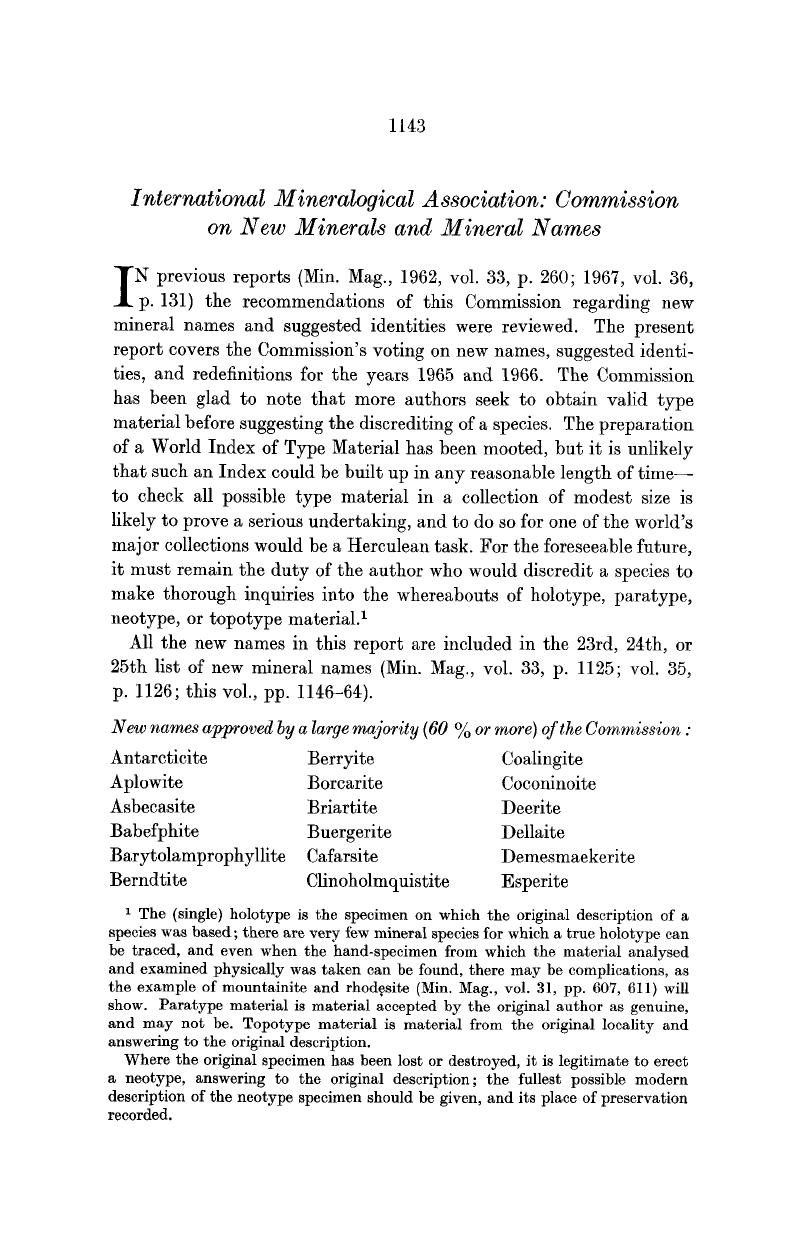Article contents
International Mineralogical Association: Commission on New Minerals and Mineral Names
Published online by Cambridge University Press: 14 March 2018
Abstract

- Type
- Other
- Information
- Mineralogical magazine and journal of the Mineralogical Society , Volume 36 , Issue 284 , December 1968 , pp. 1143 - 1145
- Copyright
- Copyright © The Mineralogical Society of Great Britain and Ireland 1968
References
Page 1143 note 1 The (single) holotype is the specimen on which the original description of a species was based; there are very few mineral species for which a true holotype can be traced, and even when the hand-specimen from which the material analysed and examined physically was taken can be found, there may be complications, as the example of mountainite and rhodesite (Min. Mag., vol. 31, pp. 607, 611) will show. Paratype material is material accepted by the original author as genuine, and may not be. Topotype material is material from the original locality and answering to the original description.
Where the original specimen has been lost or destroyed, it is legitimate to erect a neotype, answering to the original description; the fullest possible modern description of the neotype specimen should be given, and its place of preservation recorded.
Page 1145 note 1 A.M., Amer. Min. ; Bull., Bull. Soc. franç. Min. Crist. ; M.M., Min. Mag.
- 1
- Cited by




